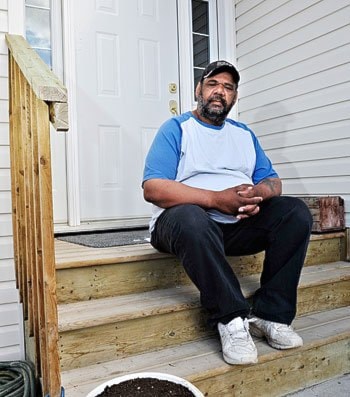A new prison for low-security risk women unveiled by the Justice Department Tuesday is more suburban home than concrete cell block.
The wood-frame $1.6-million structure is meant to be the new face of women’s corrections in the Yukon, providing much more open access to programs and permitting more freedom in inmates’ daily lives.
“Corrections doesn’t need to be oppressive to work,” said Justice Department deputy minister Bob Riches.
The building is tailored to the specific needs of incarcerated women.
“Female inmates tend to need more personal space than male inmates,” said Riches, who’s worked in mixed and segregated prisons for 28 years.
“And women inmates, in our experience, get along quite well when they’re able to manage their circumstances better and be part of their environment,” he said.
The building, which can house between eight and 10 women, will be cleaned and taken care of by inmates.
In a large kitchen filled with modern appliances, the inmates will also cook for themselves and do their own laundry.
“It’s as close to home living that we could do,” said Riches.
The living room has a few new couches and a sleek TV. The women will sleep in dorms, some double-bunked, that also have their own TVs.
The building doesn’t provide too many amenities to prisoners, said Riches.
“It’s about providing an opportunity, and for someone to make a change in their life and to heal,” he said.
Low-security women are currently kept in the main Whitehorse Corrections Centre, where they live in steel-frame bunks in dorm-style rooms.
There are 16 women serving there “in a space that’s meant for six to 10 at the most,” said Riches.
“It’s not a comfortable situation to be in a dorm with strangers,” he said.
The overcrowding led to some big problems, like cutting back on special programs for the women.
“We had a critical need for more programming,” said Riches.
It was a logistical nightmare to bring in specialists and to move inmates around the prison—especially when the males have their own activities going on.
Now, community programs on life skills, trauma and substance abuse will be much easier to undertake in or outside the prison.
The women will also have more privacy and personal freedom over how they spend their day.
Surrounded by a double fence, the perimeter will be open to women during daylight hours.
Inside, the inmates will be able to spend their time in the common area when they want to.
They can also spend time alone in their rooms, but they can’t socialize there.
“It looks like a home, but it’s not a home,” said Peter Blum, senior project manager for the Highways and Public Works Department.
The building took one year to build and was contracted to a joint venture between Dominion Construction and the Kwanlin Dun First Nation, said Blum.
There are security cameras in all the shared areas, but not in the rooms.
A corrections office beside the common area is surrounded by windows, allowing staff to monitor the common areas all day.
Inmates were expected to begin arriving in the building this week.
The Justice Department is also awaiting the completion of a new higher-security centre where men will mostly be housed.
“Some women will be housed in a secure environment and be transferred to a federal institution, so we’ll need that secure environment,” said Riches.
“But a good majority of the women will be housed in this main open area,” he said.
“It’s a far more satisfactory way of working with these women and helping them change their lives.”
Contact James Munson at
jamesm@yukon-news.com
